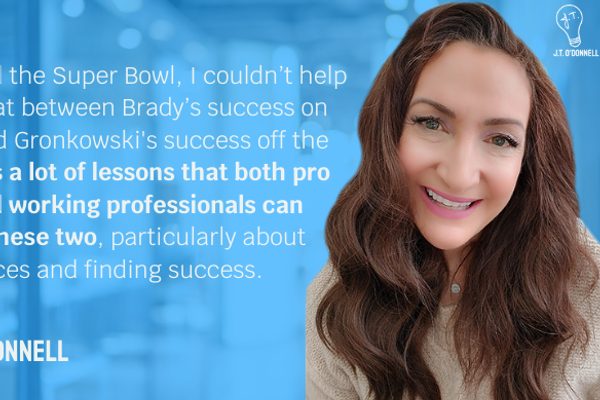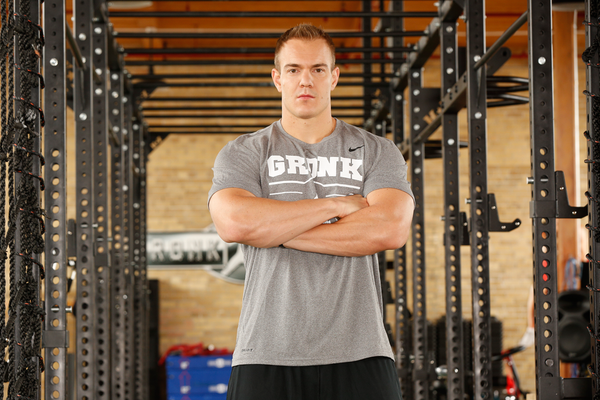
Do you want to quit your job but don't feel comfortable giving your two weeks' notice until you’ve secured a new position? You're not alone—and the good news is, it's absolutely possible to find a new job while you're still employed. In fact, conducting a job search while working can give you more leverage in interviews, allow you to avoid employment gaps, and keep your financial situation stable during the transition.
One of our Work It DAILY fans recently asked, “Hey, I want to leave my current job and start something new. What should be on my to-do list today?”
If you’re wondering how to get a new job while working full-time, I’m going to walk you through four essential steps that will help you land your next role, without risking your current one.
Referrals Matter

Bigstock
Now, before I begin, I want to remind you of an important fact. In the United States, 30 to 50% of all jobs are obtained via referral. So, blindly applying online is not going to work for you. Only 3% of the people who apply online ever get called by recruiters or hiring managers.
The four steps that I'm going to outline for you are going to help you go around that ATS (applicant tracking system) and connect with recruiters and hiring managers so you stand out as a great job candidate.
So, let's break it down...
Step 1: Inventory Your Skills
 Bigstock
BigstockYou need to inventory your transferable skills. These are all the hard skills that will be helpful in your next job. You may perform some or all of these things in a future position.
Make a detailed list of your core competencies, such as project management, data analysis, customer service, or technical writing. Identifying transferable skills is an essential step in your strategy for getting a new job while working full-time.
Step 2: Get On LinkedIn

Bigstock
You're going to take those transferable skills you've identified and make sure they're optimized on both your resume and your LinkedIn profile.
Recruiters are always searching for those key terms when looking for potential job candidates, so if you have your transferable skills listed on your LinkedIn profile (in your LinkedIn headline, for example) you're going to improve your chances that they'll connect with you and reach out to you about job opportunities you're a fit for. You should also weave these keywords into your LinkedIn “About” section and work experience descriptions to further boost visibility in search results.
Additionally, tailoring your resume for each job application by aligning your transferable skills with the specific requirements of the job description will help you stand out to hiring managers. The more aligned your online presence is with your target roles, the more likely you are to be discovered while you're still employed.
Step 3: Make A Bucket List

Bigstock
Next, create what's called an interview bucket list. This is a list of 10 to 20 companies that you would love to work for and that hire for your skill sets.
The best way to build an interview bucket list is to research companies you admire and would love to work for. Make sure you'd be able to either commute to or work remotely for these companies. If your skills also match the jobs they hire for, the company belongs on your interview bucket list!
This list will help you stay focused and intentional during your job search, especially when time is limited. Look at each company's career page, follow them on LinkedIn, and set up job alerts so you're the first to know when relevant positions open up. By proactively targeting companies that align with your goals and values, you'll increase your chances of landing a new job while working full-time.
Step 4: Identify People At Your Bucket List Companies
 Bigstock
BigstockFinally, start connecting with professionals who currently work at the companies on your interview bucket list. These insider connections can provide valuable insights into the company culture, hiring process, and what it takes to stand out as a candidate. Tap into your existing network—friends, former colleagues, alumni, or LinkedIn connections—to see if anyone can offer referrals or introduce you to key decision-makers.
Informational interviews with current employees not only help you tailor your resume and cover letter for specific roles but also increase your chances of accessing the hidden job market. Building genuine relationships with people on the inside (aka backchanneling!) is one of the most effective ways to get a new job—employed or unemployed.
The Most Efficient Way To Find A New Job
This brings me back to my very first point about getting referred to companies. This is the best, fastest, most efficient way for you to find a new job while employed because you don't have time all day to spend on your job search. Work smarter, not harder!
Need more help with your job search?
Get access to our Free Resource Center today (no credit card required!).
- How To Get A New, Better-Paying Job In 2025 ›
- 5 Reasons It’s Easier To Find A Job When You Already Have One ›
- Why You’re TERRIFIED To Find A New Job (Even If You’re Completely Miserable) ›
- How To Job Search While You’re Still Employed ›
- 3 Tips For Updating Your LinkedIn Profile While Employed - Work It Daily | Where Careers Go To Grow ›

 Bigstock
Bigstock Bigstock
Bigstock Bigstock
Bigstock


